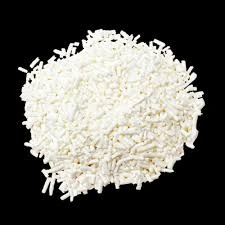
e330 additive
Understanding E330 A Comprehensive Overview of Citric Acid
In the realm of food additives and preservatives, E330, commonly known as citric acid, stands out as one of the most versatile and widely used substances. Derived primarily from citrus fruits, citric acid plays a crucial role in enhancing flavor, preserving food, and even adjusting acidity levels. This article delves into the significance, applications, safety, and potential health implications of E330 in various industries.
What is Citric Acid (E330)?
Citric acid is a weak organic acid that is naturally found in lemons, limes, oranges, and other citrus fruits. The chemical formula for citric acid is C6H8O7, and it is characterized by its tart flavor, which contributes to the refreshing taste of various foods and beverages. E330 is commonly used in the food industry as a flavoring agent, preservative, and acidity regulator. Its ability to inhibit microbial growth makes it an essential component in prolonging the shelf life of products.
Applications in Food and Beverage
One of the primary applications of citric acid is in the food and beverage industry. It is often found in
1. Soft Drinks Citric acid provides a tangy flavor that balances sweetness and enhances the refreshing quality of carbonated beverages.
2. Confectionery In candies, citric acid offers a sour kick that appeals to consumers' taste buds and enhances overall flavor complexity.
3. Processed Foods Citric acid is utilized in sauces, dressings, and canned products to maintain acidity and improve taste.
4. Dairy Products It helps in cheese production and is used as a preservative in dairy items, preventing spoilage.
e330 additive

Moreover, citric acid is also instrumental in the canning process to maintain the quality of fruits and vegetables, ensuring they remain safe and palatable for prolonged periods.
Industrial and Pharmaceutical Uses
Beyond food applications, citric acid has widespread use in the industrial sector. It is employed in the production of biodegradable plastics, cleaning agents, and cosmetics. Its chelating properties allow it to bind with metal ions, making it valuable in formulations that require the stabilization of minerals. In the pharmaceutical industry, citric acid is utilized in the formulation of various medications, acting as a buffering agent to maintain pH levels.
Safety and Health Implications
Citric acid is generally recognized as safe (GRAS) by health authorities such as the FDA and EFSA, provided it is consumed within recommended limits. It is naturally present in a variety of foods and has minimal toxic effects when ingested. However, some individuals may experience allergic reactions or sensitivities, leading to gastrointestinal discomfort. It is essential for consumers to be mindful of their personal tolerance levels.
Potential Alternatives
With growing concerns over food additives, some consumers are seeking alternatives to synthetic agents. Natural substitutes for citric acid include vinegar, lemon juice, and other citrus extracts. These alternatives can provide similar flavor profiles and preservation benefits but may not always replicate the same efficacy as E330 in commercial food production.
Conclusion
E330, or citric acid, is a multifaceted additive that serves vital roles across various industries, predominantly in food and beverages. Its natural origins combined with its wide array of applications underscore its importance in modern gastronomy and manufacturing processes. As consumers become increasingly conscious of food safety and ingredient transparency, the continued use of citric acid—as long as it is appropriately regulated—will likely persist due to its beneficial properties. Understanding the role of E330 helps consumers make informed choices while enjoying the myriad flavors and preserved products in today's market.
-
The Safety Challenges of Ammonium Nitrate FertilizerNewsJun.26,2025
-
The Critical Role of Mining ChemicalsNewsJun.26,2025
-
Shelf Life of Glacial Acetic Acid Food GradeNewsJun.26,2025
-
Enhancing PVC Longevity with 1,2,3-Benzotriazole InnovationsNewsJun.26,2025
-
China’s Dominance in Food Additive ProductionNewsJun.26,2025
-
Can Aluminum Hydroxide Replace More Toxic Alternatives?NewsJun.26,2025
-
PE and PP Plastics with Benzotriazole AdditivesNewsJun.12,2025
Hebei Tenger Chemical Technology Co., Ltd. focuses on the chemical industry and is committed to the export service of chemical raw materials.
-

view more DiethanolisopropanolamineIn the ever-growing field of chemical solutions, diethanolisopropanolamine (DEIPA) stands out as a versatile and important compound. Due to its unique chemical structure and properties, DEIPA is of interest to various industries including construction, personal care, and agriculture. -

view more TriisopropanolamineTriisopropanolamine (TIPA) alkanol amine substance, is a kind of alcohol amine compound with amino and alcohol hydroxyl, and because of its molecules contains both amino and hydroxyl. -

view more Tetramethyl Thiuram DisulfideTetramethyl thiuram disulfide, also known as TMTD, is a white to light-yellow powder with a distinct sulfur-like odor. It is soluble in organic solvents such as benzene, acetone, and ethyl acetate, making it highly versatile for use in different formulations. TMTD is known for its excellent vulcanization acceleration properties, which makes it a key ingredient in the production of rubber products. Additionally, it acts as an effective fungicide and bactericide, making it valuable in agricultural applications. Its high purity and stability ensure consistent performance, making it a preferred choice for manufacturers across various industries.











